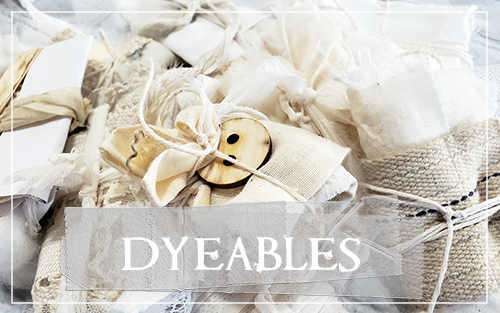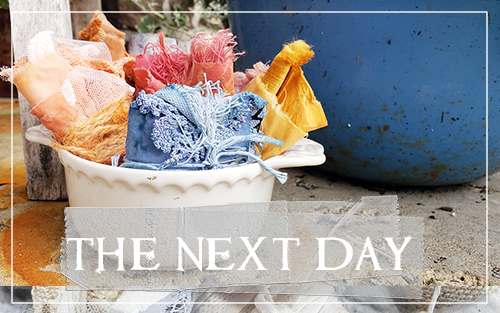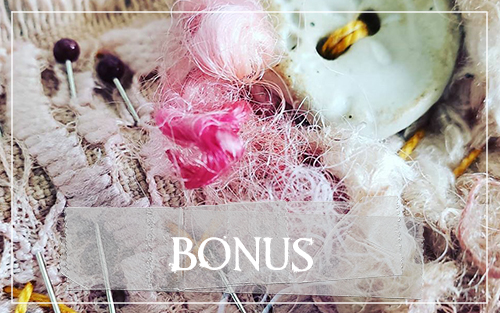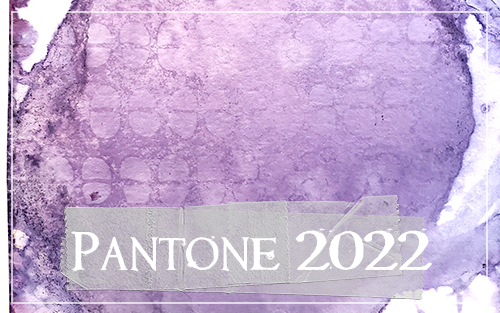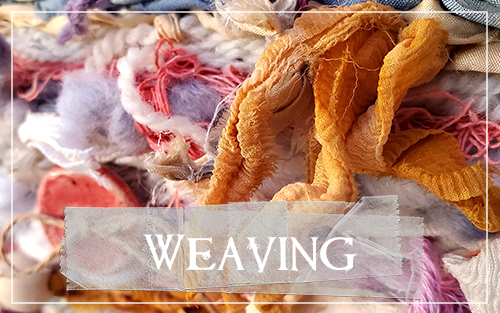The break down:
This workshop focuses on all natural, non toxic dyepot dyeing (the process of dyeing via a vat of liquid for submergence) for the Mixed Media Artist. Follow the simple steps we’ve outlined for some great results. Feel free to experiment & try new things, too! We’re always intrested in how each student interprets the dyepot lessons.

Dyepot definitions you may find helpful:
Alum:
Colorfast:
Dye:
Dyebath:
Dyestuff / Dyesource:
Fugitive:
Mordant:
(continued)
Natural Dye:
Pigment:
PH Balance:
Resist Dyeing:
Aluminum Sulfate : a natural occuring mordant. Does not cause color change.
Dyes resistant to fading, shifting, changing hue or bleeding when wet.
A color bearing organic compound that can be dissolved in water to penetrate & alter fibers.
A solution of dye & water (or other liquid) in which textiles and fibers are colored.
Any raw material that releases a dye or pigment IE the actual plants, animals, fungi, lichen, minerals or other.
Fugitive colors are prone to fading when exposed to sunlight.
A chemical used to make colors permanent during dyeing. Some mordants are hazardous & all can cause irritants and should be used with caution. Can also aid in changing dyebath colors.
The natural coloring matter of tissue. IE from plants, animals, fungi, lichen, minerals and more.
Color particles that may attach to various surfaces & substrates, either permanently or temporarily.
How acidic (or non) your liquid is. On a scale of 0-14 : 0 is acidic, 7 is neutral & 14 is alkaline (or a base which can neutralize an acid.)
Resist dyeing is the term for a number of traditional methods of dyeing textiles with patterns. Methods are used to “resist” or prevent the dye from reaching all the cloth creating a pattern. Waxes, pastes, tying or stitching can all be used to restist like screen printing, tie-dye, batik and more.

Supply List:
This is a masterlist of all supplies used in the course. Don’t run out & purchase it all! Use what you have close at hand, & don’t let the BIGNESS of the list overwhelm you. We break it down process by process for you through the course sections. Pick & choose what will work best for you in the beginning, branch out more later. Some items have links to possible shop sources.
Dyeables
- Wool (alpaca, sheep, llama +)
- yarns yarns yarns!
- roving
- bats
- loose wool fibers
- felt sheets
- old blankets
- Silk
- ribbons like sari (smooth & gauzy)
- recycled bits
- scraps
- fabric bits
- Cotton
- yarns (twisted, non, smooth, bulky+)
- baker’s twine (great for tying)
- rope
- cord
- old sheets
- muslin
- canvas
- duck cloth
- vintage quilt pieces
- tea towels
- old tshirts +
- Linen
- curtains
- table runners
- hankies
- tablecloths
- Jute
- Hemp
- Bamboo
- watercolor paper
- cotton rag paper
- tags
- cardstock
- manilla
- printed & non
- cheese cloth
- gauze
- netting
- vintage laces & doilies
- color catchers
- muslin bags
- feathers
- silk cocoons
- wooden bits
Dyesources & Dyepot Needs
click where applicable for links
- Alkanet
- Madder
- Hibiscus
- Elderberry
- Brazilwood
- Kamala
- Logwood
- Marigold
- Quebracho
- Eupatorium
- Cutch
- Red Cabbage
- Tumeric
- Blueberry
- Avocado Pits
- Dry Black Beans
- Black Walnut (husk still attached)
- Beet Root (or powder)
- Onion Skins
- Cochineal
- Lac
- heat source (stove or tabletop burner)
- pans
- mixing bowls / glass jars
- wooden spoons
- PH neutral water
- strainer
- clips (chip, bulldog, or clothespins)
- trash bags or table cover
Keep your dyepot tools & eating utensils separate.
- gloves
- mask
- pipettes
- funnels
- airtight containers for storage
- PH neutral soap
- Lemon Juice OR Vinegar (acid)
- Baking Soda, Chalk OR Soda Ash (base)
- Iron/Rust Water
Resources:
Check out these places (two of our favorites!) to find some of the more rare & exciting dyepot sources/stuffs.
https://maiwa.com/
https://www.dharmatrading.com/
You can also check etsy for some smaller personal style shops.
Also, if you have a restaurant supply close at hand.. you can get a BUNCH of the above stuff for super affordable prices.. wooden spoons, mixing bowls, strainers… etc.

Navigation:




